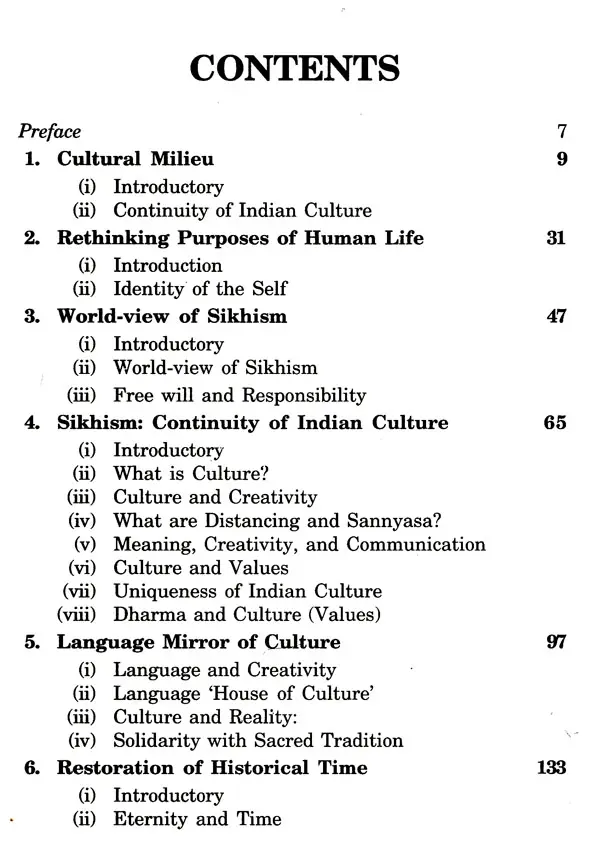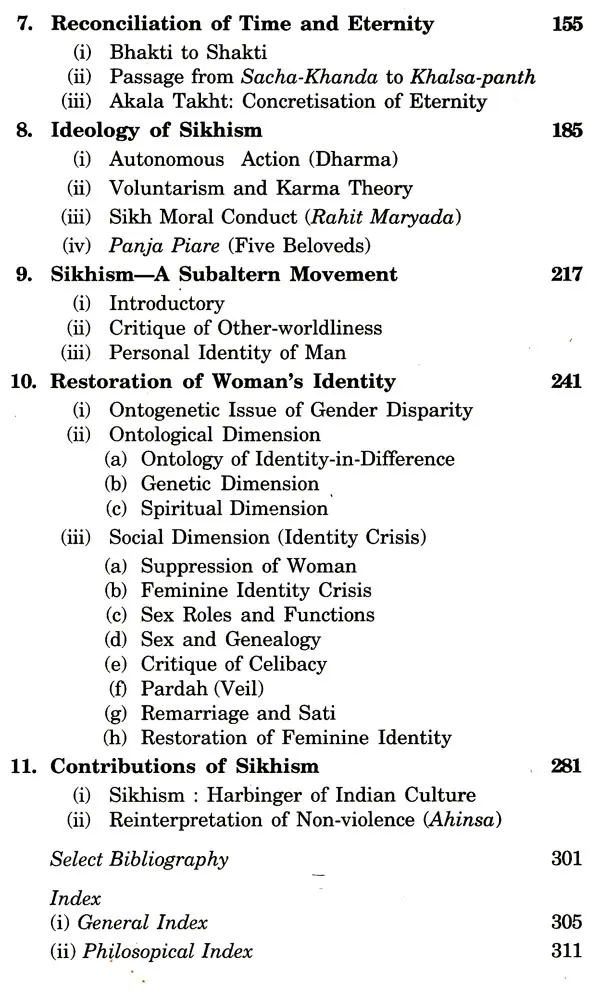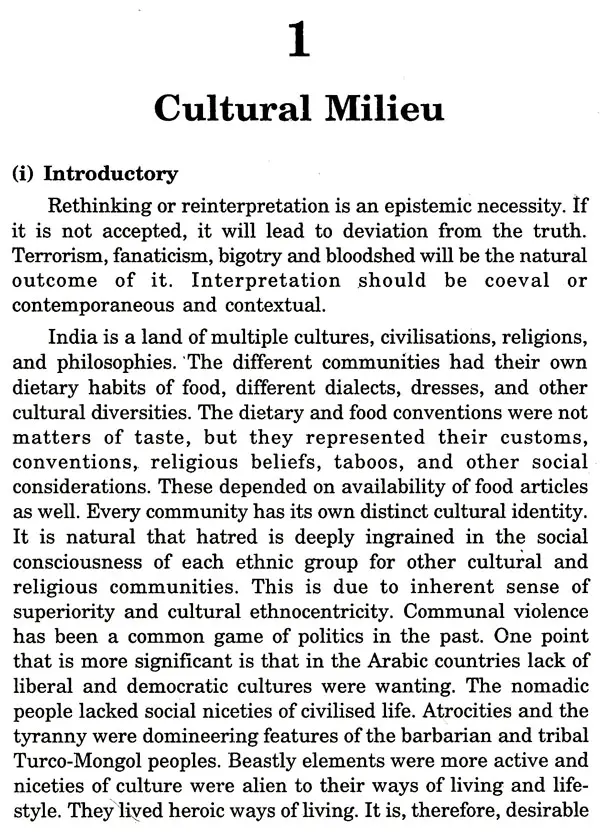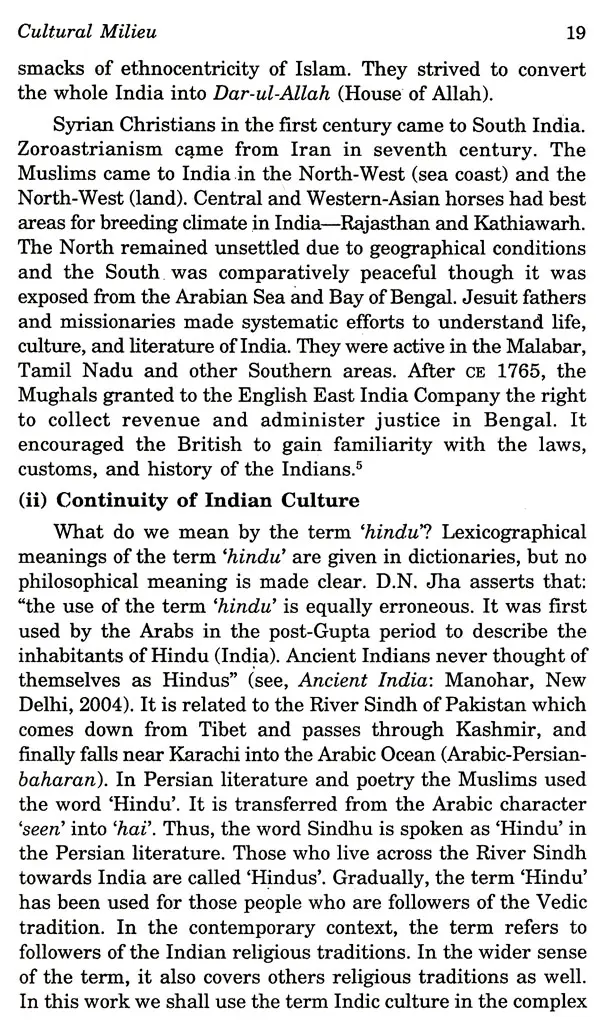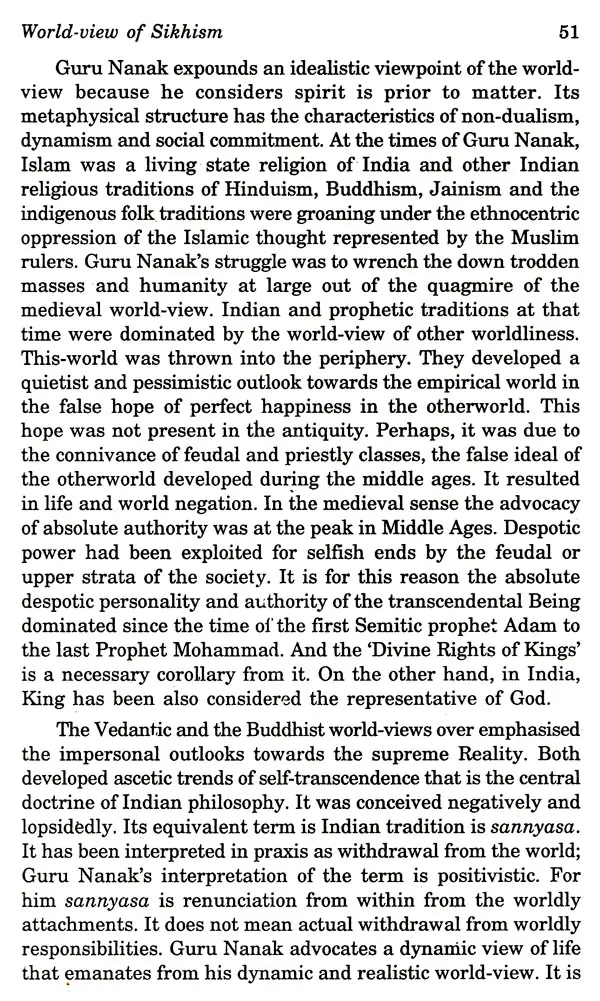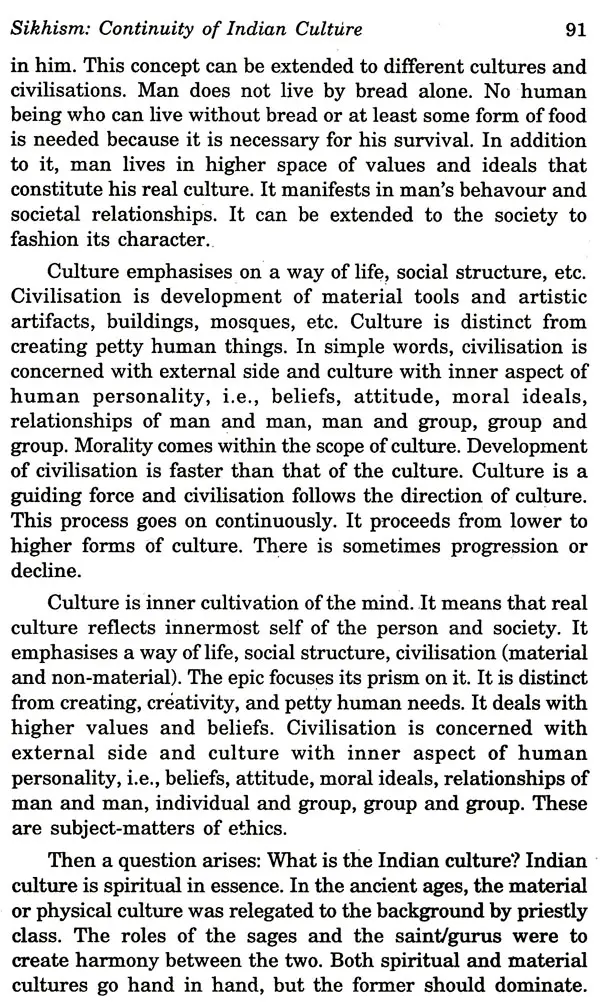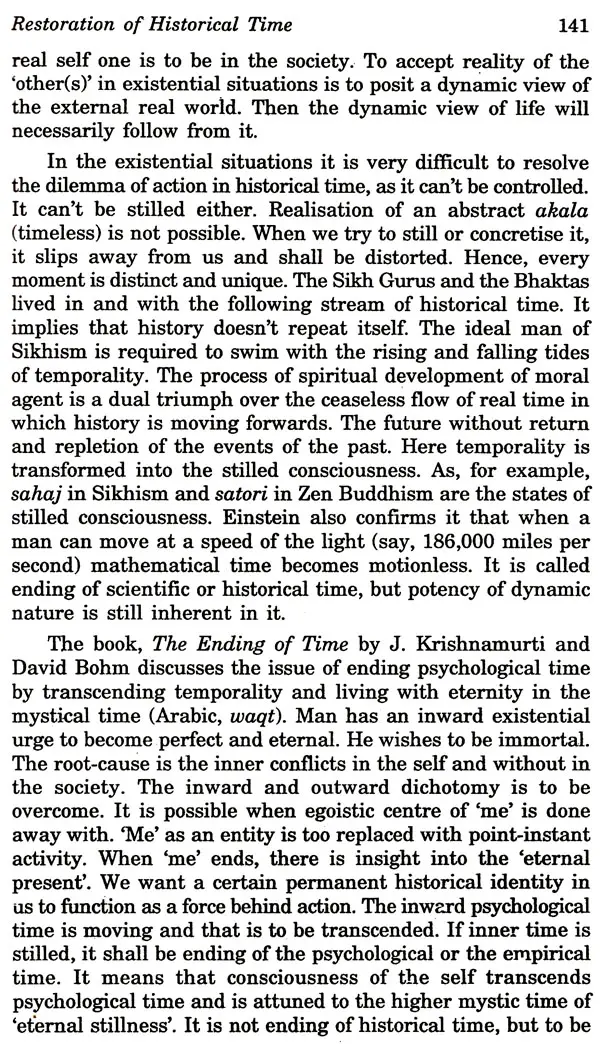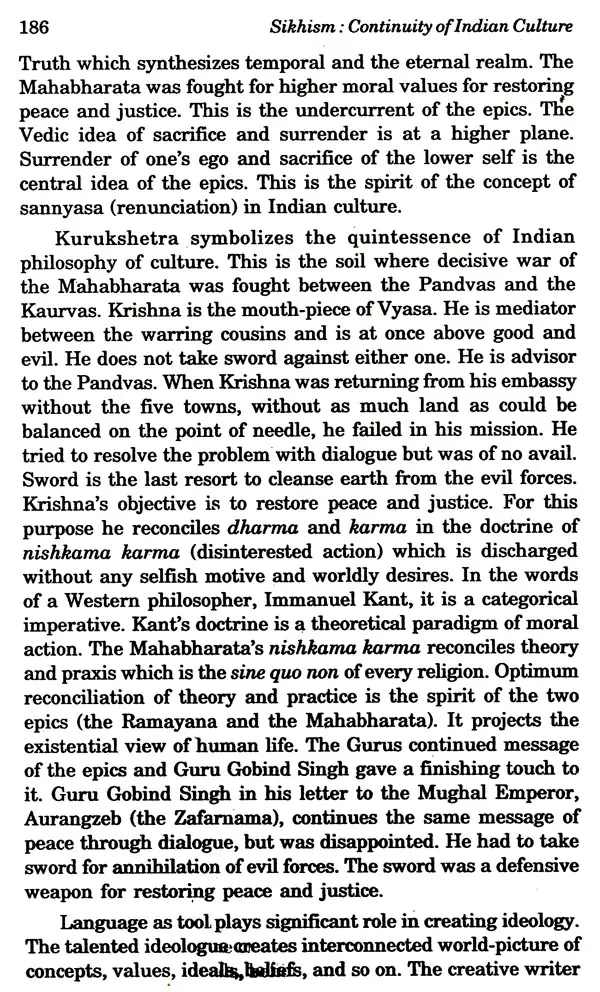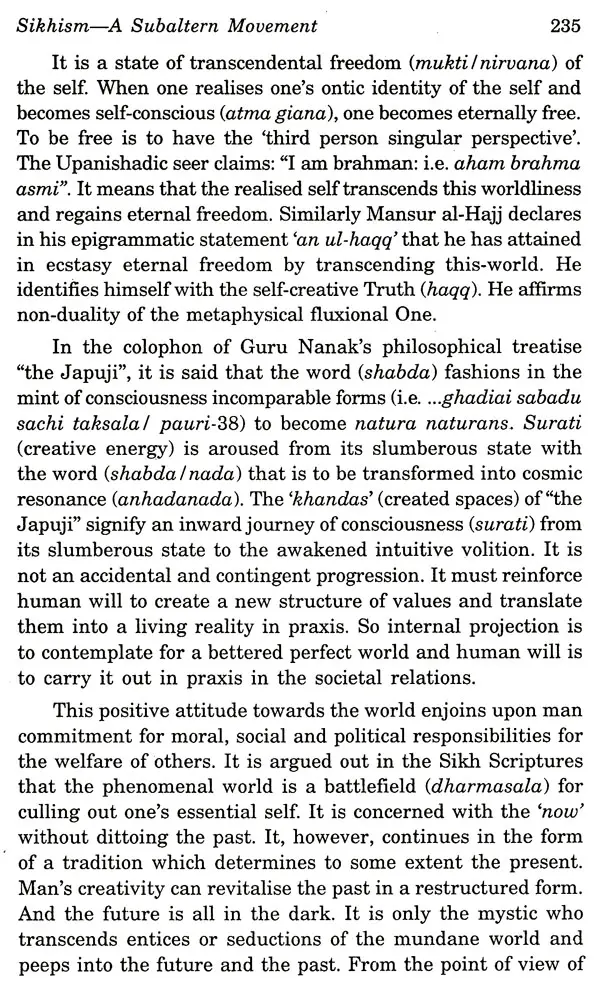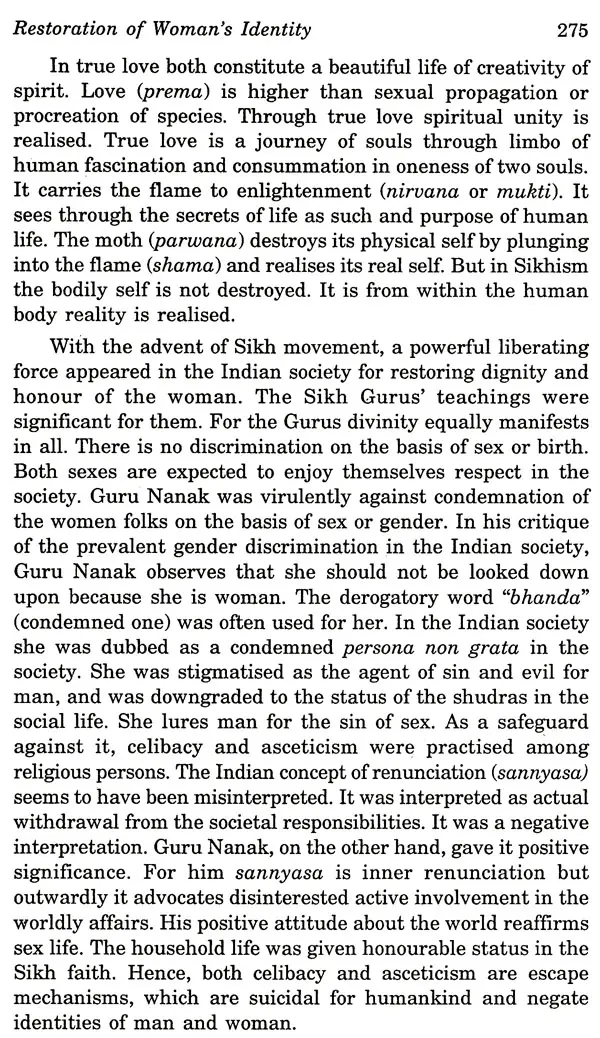
Sikhism Continuity of Indian Culture
Book Specification
| Item Code: | UAN914 |
| Author: | Nirbhai Singh |
| Publisher: | Kalpaz Publications |
| Language: | English |
| Edition: | 2013 |
| ISBN: | 9788178359427 |
| Pages: | 320 |
| Cover: | HARDCOVER |
| Other Details | 8.80 X 5.80 inch |
| Weight | 520 gm |
Book Description
It resuscitates the illuminations of the ancient rishis, Gurus, Sufis, and Bhaktas. The paradigm of the interpretations is in the Indian cultural context. The book mirrors the essence of Indian culture through Guru Nanak's ecstatic vision. It reconciles eternity and temporality, and restores historicity of human action and societal realities of the phenomenal world, which were lost in the medieval ages.
His works are radical departure from the existing exegetical explanations of Indian philosophies. He has to his credit more than ten original philosophical research works of high standard. His innovative books are Bhagata Namadeva in The Guru Granth, Sikh Dynamic Vision, The Sikh Vision of Heroic Life and Death, The Philosophical Perspective on Sikh View of Martyrdom, Philosophical Contributions of Bhaktas, and Gurus to Indian Culture, et al.
He was editor of the prestigious journals: The Journal of Religious Studies, Punjabi University, Patiala, and The Humanities and Sciences, Shimla. Besides, he has contributed more than fifty research papers to the leading research journals and periodicals.
Indian culture is action oriented. The central value of Indian culture is enshrined in Dharma (righteous action). This idea we find in the Indian epics (the Ramayana and the Mahabharata). The concept was carried forth in the teachings of the Gurus which are found in the Sikh scriptures. An endeavour is made to work out that Sikhism is a continuity of Indian culture. There is no departure from the fundamental philosophical doctrines of Indian culture though some now dimensions are added to it. Indian culture has been philosophically reinterpreted in the medieval context. It is hoped that critical insights of the readers will appreciate the philosophical interpretations based on 'simultaneity of the non contemporaneous'.
It follows that there is no absolute truth. It is relative to time and context. It is the modern meaning of truth. Modern Austrian philosopher Wittgenstein asserts that there is no Platonic ontological base of reality or truth. And there is no Kantian dichotomy between the transcendent and the phenomenon. It has been argued in the book passim that the time is stretched into eternity with spiritual discipline. Thus, the phenomenon and the transcendental realms are reconciled into non-dual. Truth is activity that is knitted into logical space. It goes on changing with the changing conditions. Hence thread of arguments in the book is that Sikhism in essence is Indian culture revivified in the medieval time. And the present work is presented in modern idioms of philosophical hermeneutics. Contributions of Sikhism to Indian culture have been highlighted.
Underlying concept of Indian culture is at once transcendence from entices of this world and disinterestedly involve in it. India's cultural world view is built on myths and traditions or ethos, Our forefathers deified traditions and legends, but the Gurus demythicised the Indic and the Semitic religious traditions and historicized them with a view to reviving reality of human action. Notwithstanding, ancient rishis had historical sense, but they considered the empirical world delusive because it is short-lived/ephemeral albeit, there are references of the otherworld, but these erode their ontic existence. The Gurus did away the medieval prevalent concept of the otherworld and restored historicity of karmas dominated with spirituality. The undercurrent of historicity was crystallized. They reconciled theory and praxis. They lived unto this ideal. There is no contradiction in their saying and doing. Nevertheless, historical action necessarily follows from their dynamic onto-theology. Their central emphasis was discharging disinterested action (nishkama karmas) for restoring peace and justice in society. It was recycling of the central message of the Bhagavata Gita. Realization of Indian ideal was processed in history from Guru Nanak to Guru Gobind Singh It was consummated with the creation of the Khalsa, even though decadence dominated in the Misl (Sikh confederation) period. In the present scenario spiritual (piri) is overshadowed by temporality (mire). Simultaneity of spirituality and temporality with dominance of the former is the central linchpin of Indian and Sikh concept of culture. The Indic and the Semitic cultures are blended without suppressing ontic non-duality or identity and otherness of either one. The present book is logically articulated to synthesize identity and otherness.
**Contents and Sample Pages**

